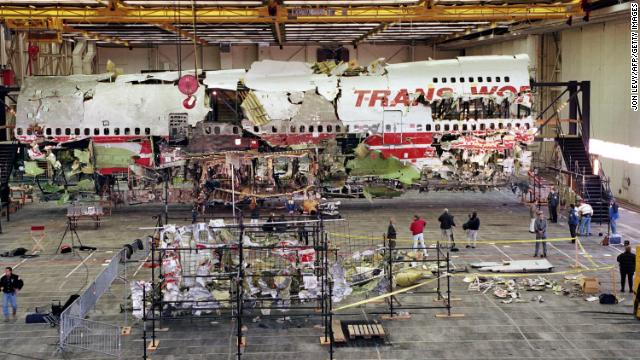All 230 people on board the Paris flight were killed. The Boeing 747 was destroyed and the wreckage fell into the waters of the Atlantic Ocean off the shores of Long Island, New York.
The reconstructed wreck has been under investigation in accident training courses for almost twenty years, the NTSB said in a statement on Monday.
With the help of the navy as well as contracted fishing trawlers searching the ocean floor, investigators were able to recover more than 95% of the aircraft. After nearly a year, the remains of all 230 who died were also recovered.
As part of the investigation, NTSB reconstructed a 93-meter segment of the fuselage, which took dozens of people months to reassemble the literal pieces to help understand what happened to TWA Flight 800.
Following the investigation, the reconstructed aircraft was moved to a 30,000-square-foot hangar at NTSB’s training center in Ashburn, Virginia.
However, his days as a training assistant will soon come to an end as the agency prepares for the training center’s lease. With the advancement in technology – including 3D scanning and drone imaging – such a large-scale reconstruction is no longer necessary.
The NTSB has said it will stop using the reconstruction on July 7, 2021, just shy away from the 25th anniversary of the crash. Thereafter, the reconstruction will be thoroughly documented for a few months using 3D scanning techniques, and the data will be archived for historical purposes before the wreck is finally destroyed.
NTSB said the original agreement with the families of those who died in the crash contained a provision that the reconstruction would only be used as a training tool and never as a public exhibition.
Sharon Bryson, managing director of NTSB, said that families had been notified of the dismantling, and that they had “received direct knowledge from the NTSB before we announced it.”
